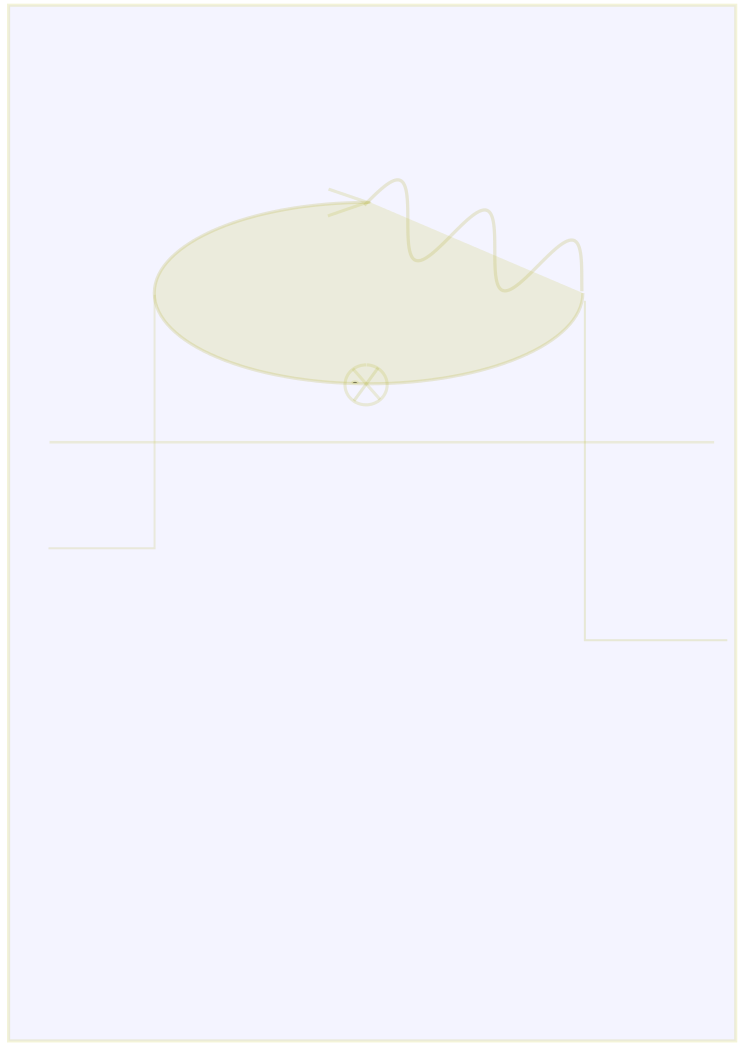
Rough paths
Solving a classical differential equation dy(t)=V(y(t))dγ(t) controlled by a path γ: ℝ→ℝ^d -- or more generally evolution equations - relies most of the time on some fixed-point method. Iterations produce iterated integrals of the path γ against itself, which can be interpreted geometrically as generated areas and volumes. When γ is irregular, say, α-Hölder (α<1), then the associated perturbation theory requires an independent definition of first iterated integrals to order N=1/α.
This apparently naive problem is in fact surprisingly deep, and draws on extremely varied mathematical and physical structures. Works on rough paths due to T. Lyons, N. Victoir, P. Friz, M. Gubinelli et al. show that the above data are equivalent to lifting trajectories as Hölder sections of a principal fiber bundle on ℝ of fiber G_N, where G_N is a free nilpotent group. Such sections can in turn be approximated by pieces of sub-Riemannian geodesics for the associated Carnot-Carathéodory metric, instead of classical Taylor approximations. Despite numerous applications of the general theory to stochastic calculus -- see book by Friz & Victoir --, the purely geometric approach cannot handle in general low values of α because (i) there is no canonical lift; (ii) there is no simple, natural way to find one. In particular, no Gaussian approximation of fractional Brownian motion (fBm) with Hurst index α<1/4 seems to yield a finite Lévy area (second-order iterated integrals).
Starting from 2007, I introduced new algebraic and physical approached allowing explicit lifts. A fundamental rôle is played by skeleton integrals or Fourier normal ordered integrals obtained by Fourier analysis -- in close connection to paraproducts -, controlled in fine by multi-scale techniques inspired by constructive renormalization techniques in quantum field theory.
Complex-variable techniques. As noted early on, fBm -- as follows from its harmonizable representation -- may be obtained as the real part of a complex-valued process Γ defined on the upper half-plane. For α=0, the Γ process appeared in an article by Y. Fyodorov, B. Khoruzhenko and N. Simm as the mesoscopic limit of the logarithm of the modulus of the resolvent of GUE random matrices.
Fourier normal-ordering algorithm. Skeleton integrals are encoded by "tree integrals". Classical Chen and shuffle algebraic compatibility relations (equivalent to the geometrical lift requirement), are naturally interpreted using the product/co-product structure of the Connes-Kreimer and shuffle Hopf algebras. We have show that any formal rough path may be obtained through Fourier normal-ordering algorithm from arbitrary Fourier normal-ordered tree data.
A Fourier regularized rough path over fBm with arbitrary α was presented as a first simple application. Throwing away all tree data of order ≥2 instead yields an even simpler construction, of which the position space regularization introduced by D. Nualart and S. Tindel is a variant.
Renormalization scheme. It is natural to construct tree data by regularizing skeleton integrals. Instead of regularizing in some more or less arbitrary way, we reinterpreted skeleton integrals in terms of Feynman integrals and renormalize them using the classical renormalization formula known in quantum field theory as Bogolioubov-Parasiuk-Hepp-Zimmermann (BPHZ) forest formula.
Ultraviolet "evanescent" interaction. In the case of fractional Brownian motion with 1/8<α<1/4, we showed that, by perturbing the Gaussian measure by a well-chosen quartic interaction, it was possible to make iterated integrals finite while leaving unchanged the original covariance kernel. This interaction may be called "evanescent" since it only regularizes fine, deep ultra-violet details, and disappears at finite scales. Going below α=1/8 would "simply" require considering a more complicated interaction, roughly the sum of the squares of the divergent skeleton integrals.
Connection to para-product renormalization of SPDEs. Fourier normal ordering is closely related to para-product methods used by Gubinelli, Bailleul et al. to show short-time existence of singular stochastic PDEs. Thus the above schemes should naturally also play a rôle in renormalizing SPDEs (ongoing project with I. Bailleul).